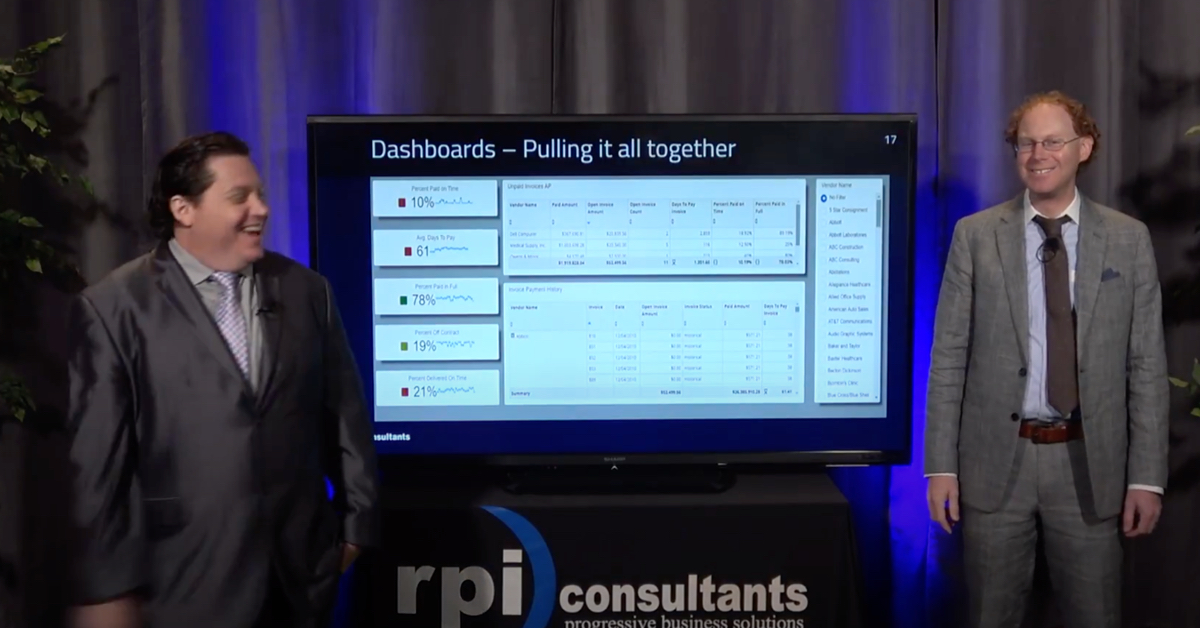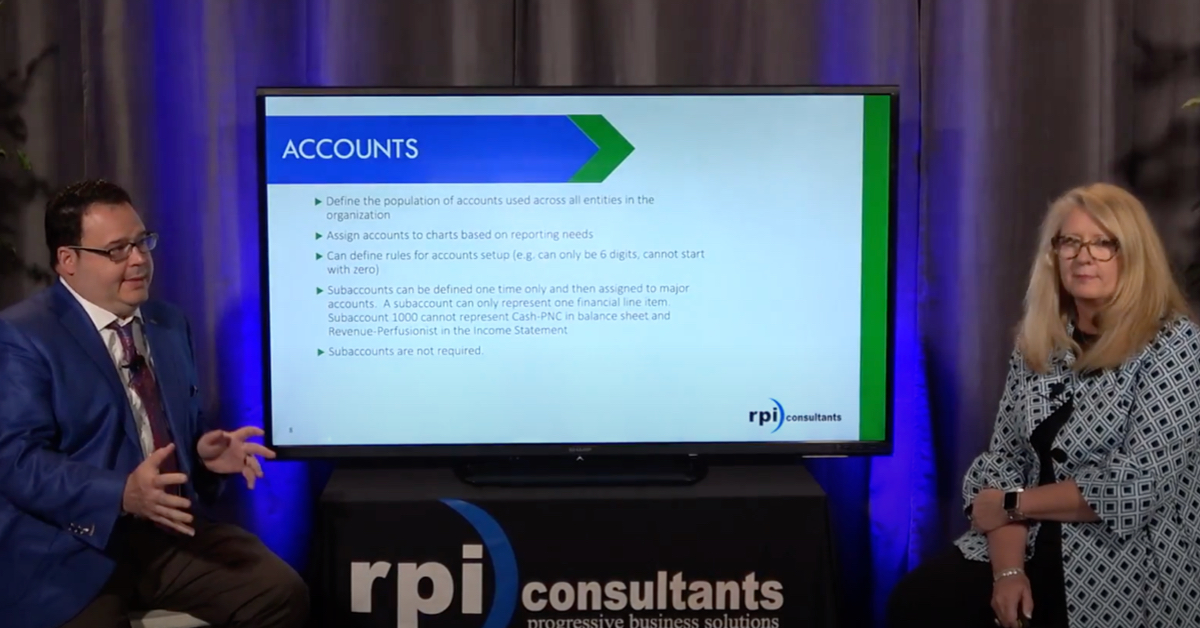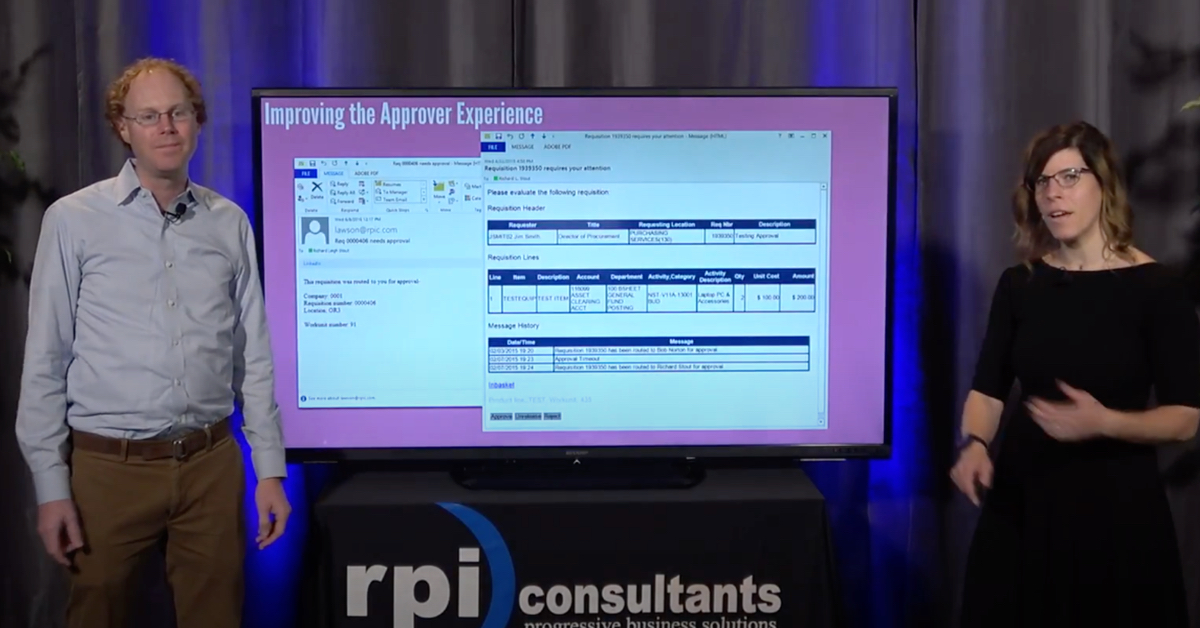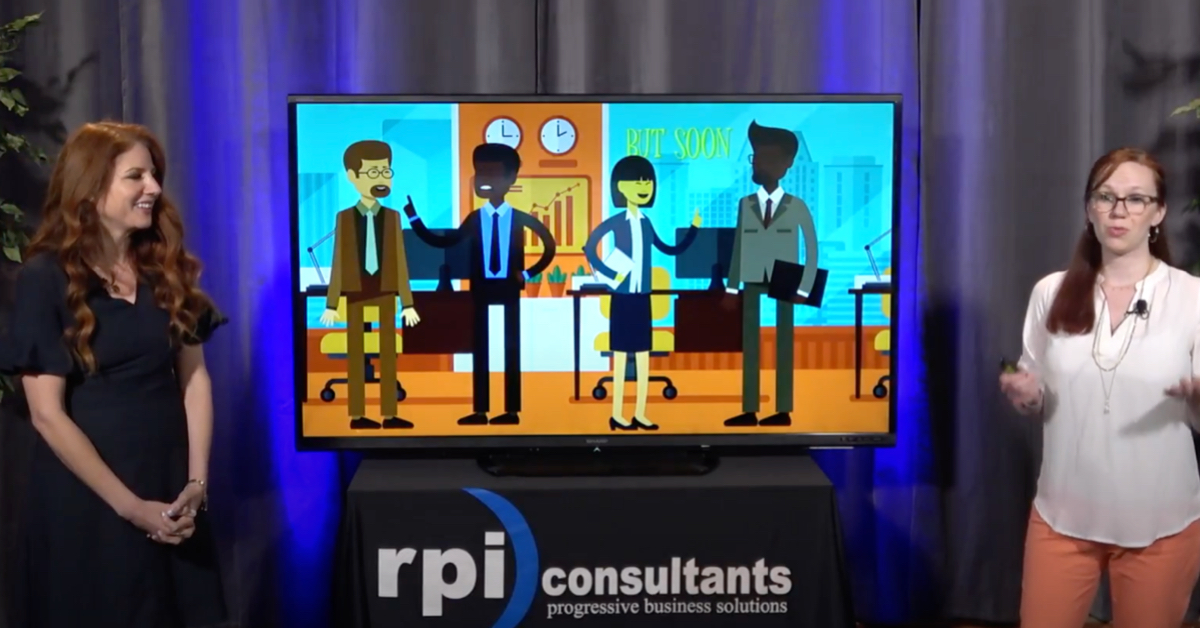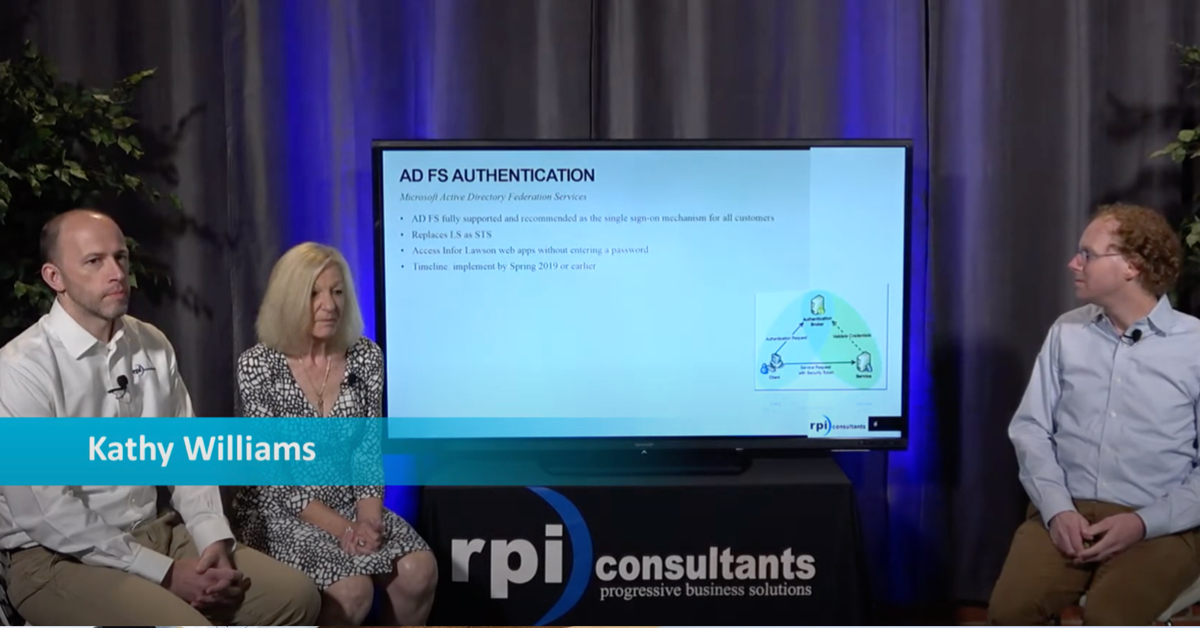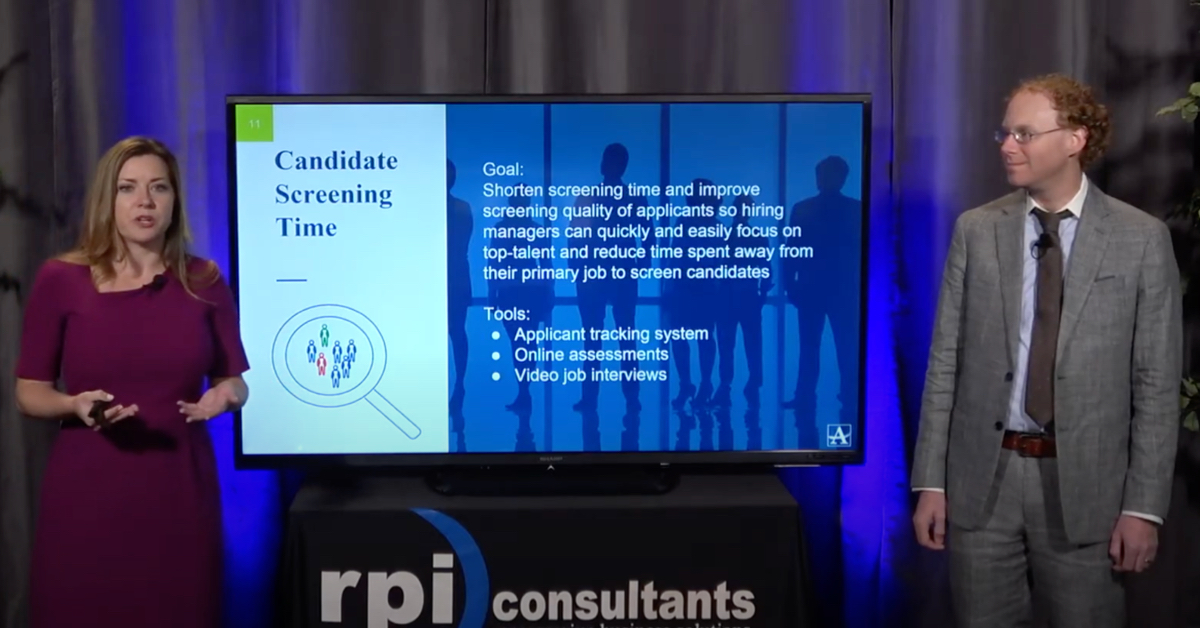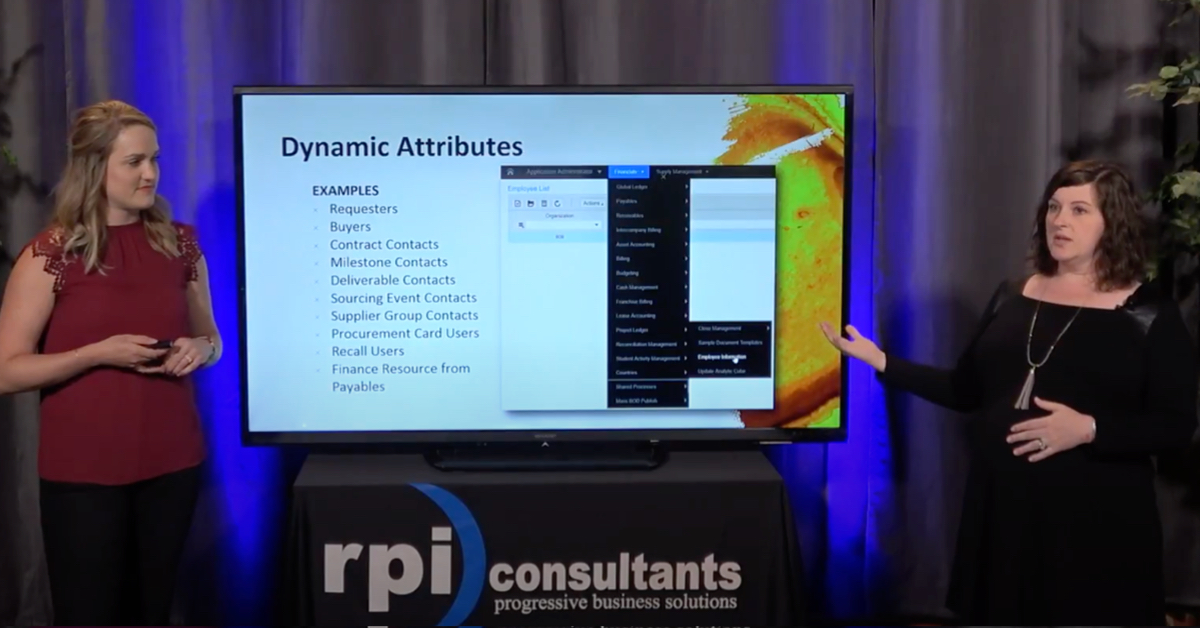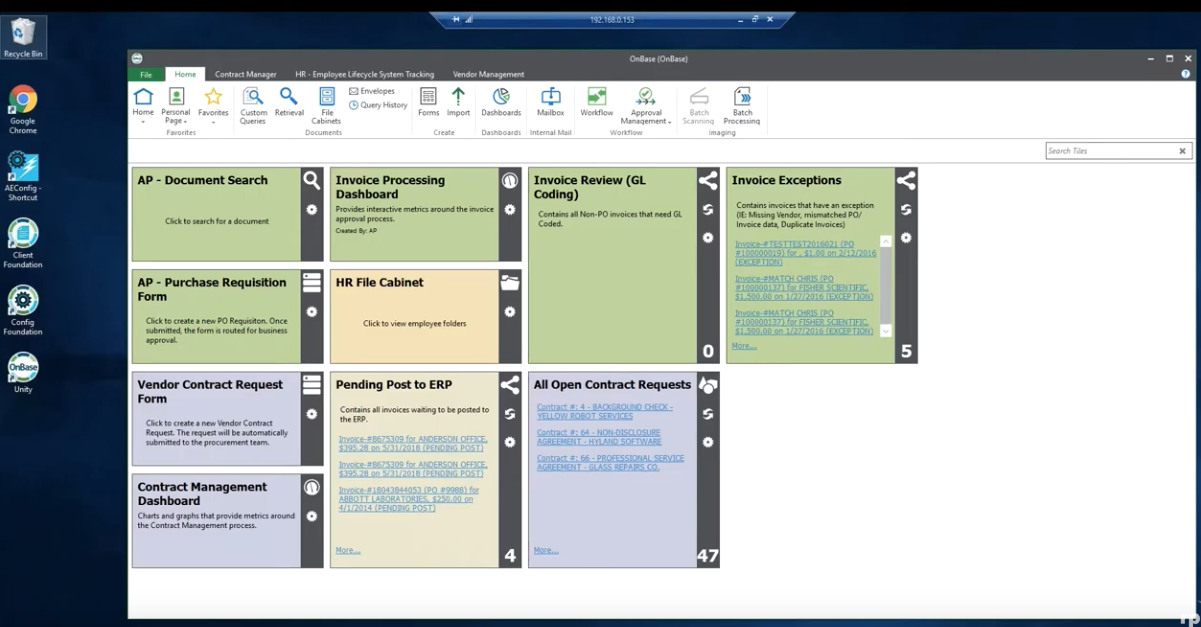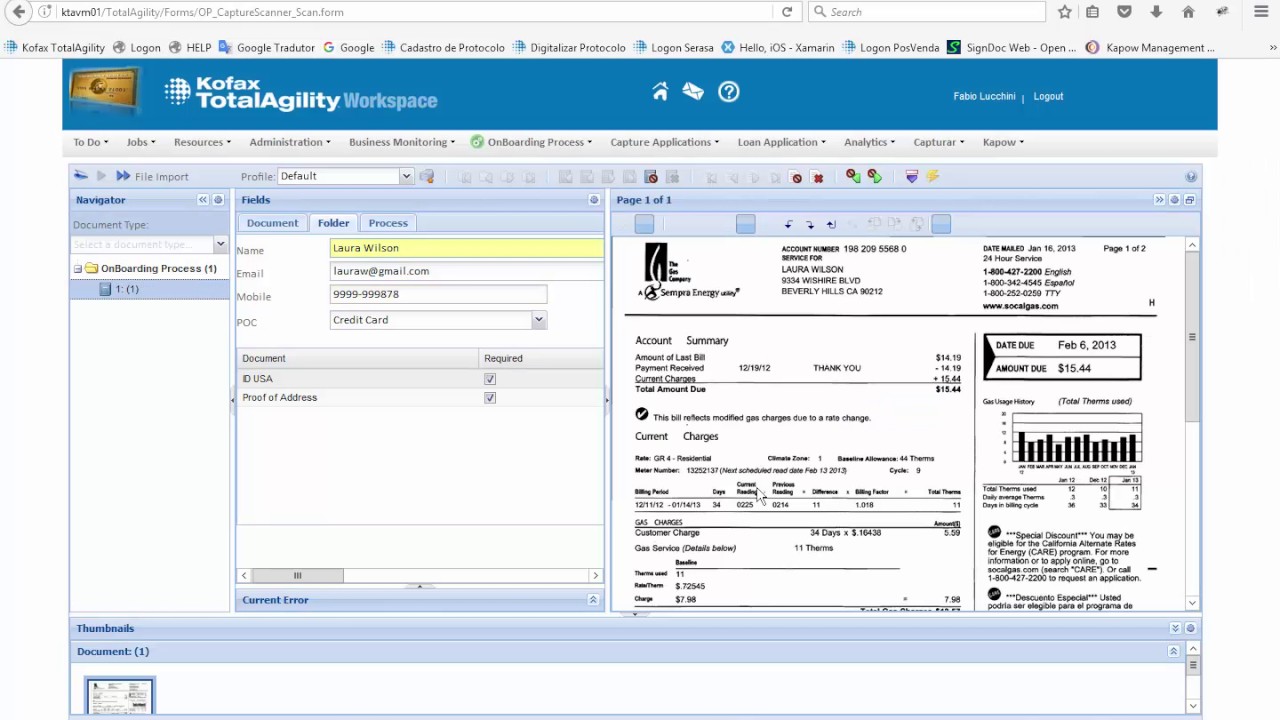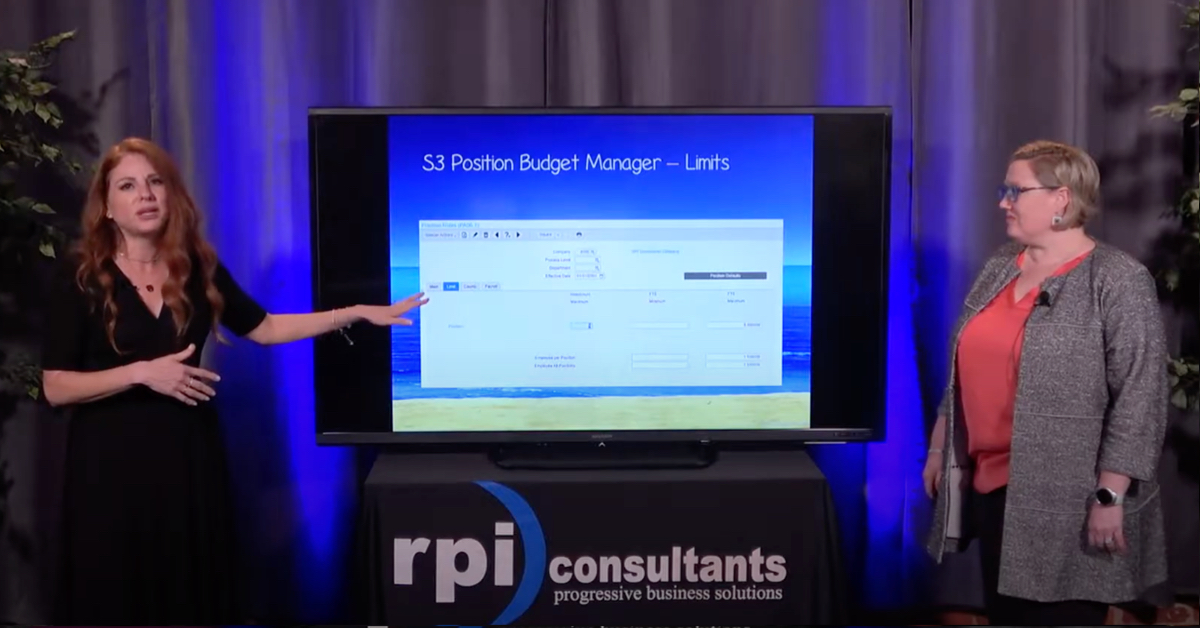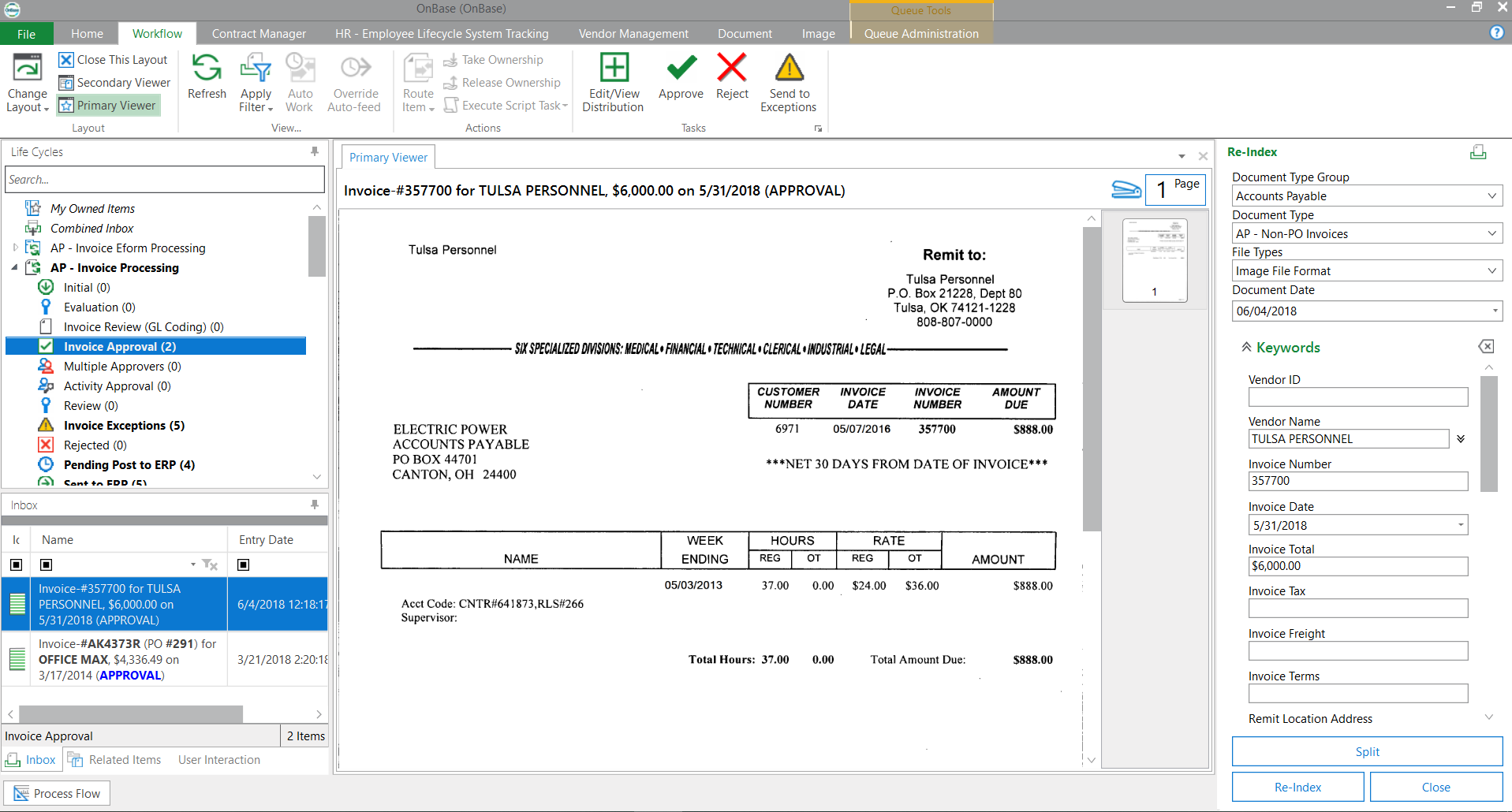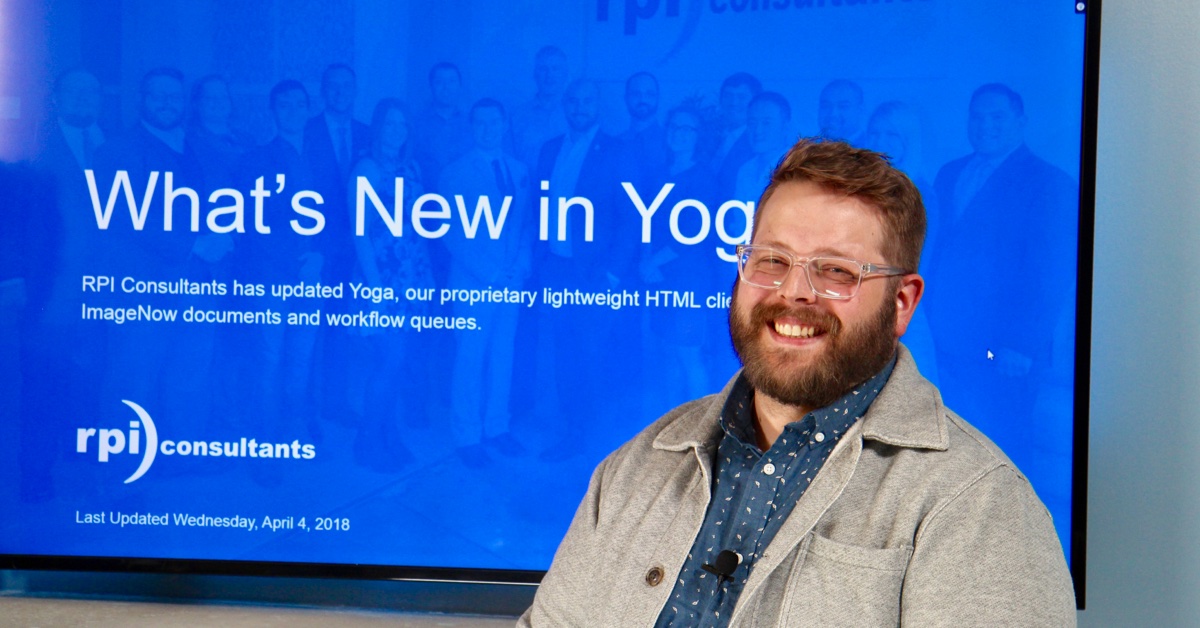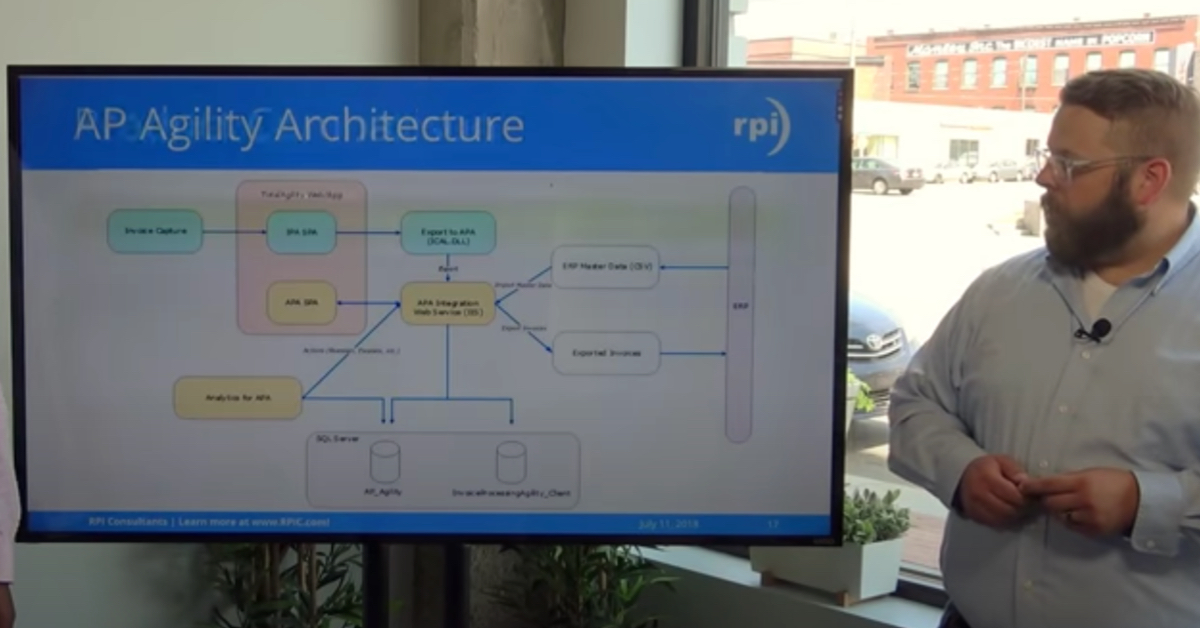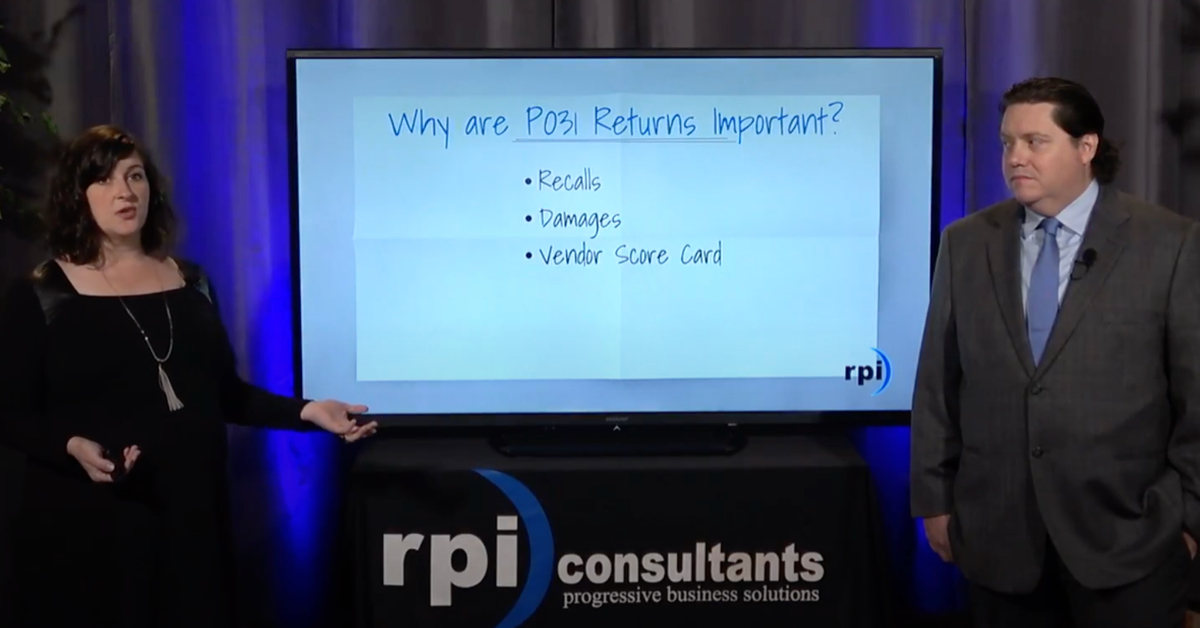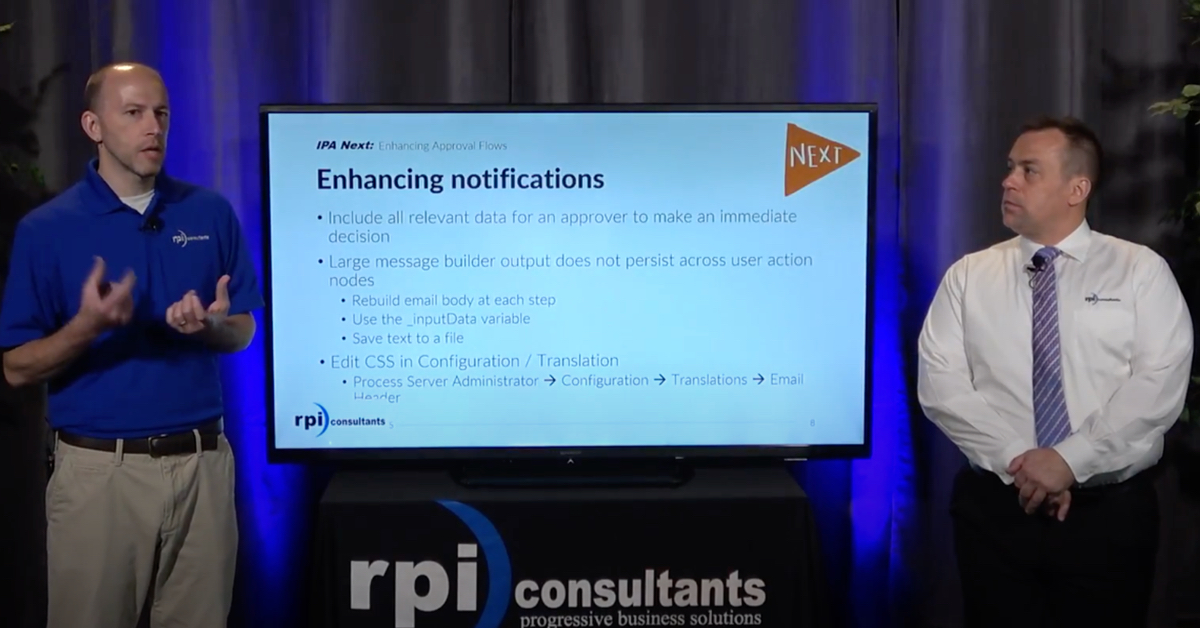Abbey Oliver:
Good afternoon and welcome Webinar Wednesday. Today we will be discussing Technical and Solution Health Checks. Just to cover a few housekeeping items. To begin with, this webinar will be recorded and posted to our YouTube channel as well as our blog within a few days. For those of you dialing in today, this slide deck will be emailed out to you immediately after the webinar. We also have a moderator standing nearby. Those of you that have questions, please feel free to submit them via the GoToWebinar interface and also if you have any additional ideas for future webinars, be sure to let us know.
Our upcoming May webinars, we have Outlook integration for OnBase starting at 11:00 am Central time, followed by Kofax Products and Solutions at 1:00 pm. Then, planning your next upgrade at 3:00. I am Abbey Oliver. I am a senior consultant here at RPI. I have over five years’ experience in designing and implementing ECM and advanced data capture solutions. I mainly focus on HR solutions or insurance solutions but I’ve also done a lot of custom solutions as well.
Derreck Mayer:
I’m Derreck Mayer, another senior consultant here at RPI. I have been working with ECM for over eight years now, with an emphasis on accounts payable and higher education solutions, including other back office and I have also had an emphasis on client facing training. In my free time, I do a lot of podcasting. I like to talk.
Abbey Oliver:
Today, we’ll give you a little overview about RPI and what we do. Then, we will look at what is a health check in general. Then, dive into the specifics of both technical and solution health checks, and follow up with a summary and any questions at the end.
About RPI, we have over 80 full time employees across the United States, with offices in Baltimore, Tampa and here in Kansas City. We provide a breadth of different services from installations and upgrades to work flow analysis and design and our partners include Perceptive Content, on OnBase by Hyland, Brainware by Hyland, Kofax and Infor Lawson.
What is a health check? A health check is a project with a dedicated resource that will analyze different aspects of your system. Some customers choose just to go with a technical health check, and some choose just a solution health check. Both can be done to really optimize the overall results. RPI is available to complete these health checks across all the different platforms, Perceptive, OnBase, Kofax, you name it.
Then, to dive into the technical side of the health check. When RPI begins a technical health check, we consider the variables that each customer has in their environment. We note the gaps between their current state and the recommended best practices. Then, we can provide an objective view or objective plan to ensure that the health of your environment is the best shape that it can be. Our deliverable from this work is called the Technical Health Check Report.
Our consultants will run through a list of objectives to complete the technical health check. We start by monitoring your baseline performance and we can produce recommendations for both high availability and high scalability options. We do ensure that our customers have a contingency plan in place, and if they do then we will review that and make sure it’s in line with the best practices. We also report and give recommendations on all servers across our customer’s environment. Whether that be the database server, the app server, web server, remote server. We take a look at all of those. Then, once we’re completed with the analysis, we provide that Technical Health Report, which is easy for our customers to understand and interpret.
Here’s just an example of that. As you can see it’s organized in a way to show the action item, the impact it has on the environment, the level of effort to complete the action, detailed notes regarding what we found during our analysis, and the status of the action items.
Derreck Mayer:
Next up we’ll talk a little bit about contingency planning, which is one of the things that a technical health check will look into. The first big piece of that is backing up your data. While most organizations are probably doing this to some extent already, we all want to make sure that everything is being backed up to best practices. This includes application files, anything from file storage system, configuration files, your database, making sure that it’s being backed up as needed and a disaster recovery plan is also in place, which is how we get to high availability opportunities. With certain products, for example Perceptive Content 7, active-active environments are available. We can create high availability situations to make sure that disaster recovery and fail over are options for you, depending on the types of access you need for your documents.
How are your documents being stored? What is your file storage system? Are these local? Do you have a NAS or a SAN? Can we put the file storage system on something that’s more readily accessible and can handle fail over more easily? We’ll talk a bit about mirroring and fail over here and we’ll talk about fail over clusters next.
This is just an example of what we can do with a contingency plan for disaster recovery. If you’re using an active-active environment, you have two different nodes that are running at all times, but you can also have a regular fail over situation, where one node is the primary node, and the other is the secondary node, where the primary node is running at all times, and if something were to go wrong, for whatever reason, whether that’s a disaster situation, a technical hiccup, or maintenance, it will fail over to the secondary node. The idea here is that the fail over allows users to continue using whatever that application is, without any real interruption. This is really important in the healthcare industry, when you’re dealing with patient documentation, patient charts, things that need to be readily available instantly.
Abbey Oliver:
Perfect, to expand on some of our best practices, during this Technical Health Check, specifically work flow performance. Work flow intelligently searches for outstanding work, which is then bundled and made ready for a worker thread. This process of bundling and assigning and processing work is designed to be fair to the queues, while still maximizing throughput. Your system administrator can boost performance by adjusting these worker threads, kind of looking at the number of saturated queues and then adjusting your threads to match that, and then also considering overall CPU. You can also introduce load balanced routing to route work to multiple queues that can perform the same action.
Then, the graph on the left shows how increasing the number of worker threads for a workflow process effects the overall throughput. The more worker threads, the higher throughput volume. Then the graph on the right is the same test that also shows the average time taken to move an item from the starting queue to the complete queue, and that also improves with additional worker threads.
Derreck Mayer:
Next up, we’re going to take a look at what Solution Health Checks are and some of the differences between them and the technical health checks. Similar to the technical health checks, there is a scope of work involved for a Solution Health Check. We’re going to perform a comprehensive review of all of your solutions for your applications, your ECM applications, as well as OCR and we’ll discuss things like an upgrade evaluation. Is there a newer version of the product that’s currently available that you would be able to as an organization, take advantage of some new features? We will of course identify best practices. These are across the board things where we can find work flow efficiencies, any user security, group security, how documents are being captured into your enterprise content management system. Are there ways that we can better automate those processes and streamline it? Any custom development that’s being done to help automate things already? Maybe there’s ways to streamline those or bring them up to line to best practices, and reporting to assist in determining where these bottle necks may be.
We’ll also provide some training recommendations, from an IT perspective, a super user perspective, and an end user perspective. We may be able to provide some training opportunities to make the system more easily available and more usable by your employee staff.
Finally, we will provide some actionable items, things that may be quick wins that we can take care of even during the health check possibly, things that may be able to be accomplished without any additional licensing. We’ll also provide things that may be an advantage to your organization, including products that may be new for your version that you’re running, things that may automate systems and processes to more streamline them.
Abbey Oliver:
Perfect, so similar to the Technical Health Check, there is also a solution report for the Solution Health Check. This report is delivered to the client at the end of the health check and it will contain sections outlining the best practices, whether they are already implemented or not. If they’re not implemented, we’ll note the impact that is necessary to implement them, and then we can also provide the current architecture and any analysis results from any scrips or logs that we have looked at.
Derreck Mayer:
Here is an example of a solution report. This one specifically here is looking at an overall work load process. Again, this is just an example. The real one for your organization would be significantly more detailed. The goal here is to show the different sections of your workload process, the different areas.
We begin on the far left with the capture process. How are documents being brought into your ECM? The example here is showing email and scanning, which are the two most common ways to bring documents into your ECM application. We can talk about the percentages and how that’s done, and if there’s ways to automate that.
In the middle we have OCR, which is in this example something that this solution is using. This is going to show percentages as far as how many documents need manual verification, versus how many are going straight through to line pairing in this example. Here it’s a 50-50 split, but you can see some other numbers about how quickly these documents are being processed. Here we can see that oh well 78% of the documents are processed within a minute. That’s pretty good. Maybe we want to see that number more at like 85 or 90%. What can we do? Have some numbers than for the line pairing process. For this particular organization, we can see that 8% require manual handling. Maybe we want to get that down closer to 5%.
Then, finally, how are the documents leaving the ECM? Are they being stored in the ECM where users can then retrieve them at any time? Are they being exported to a different content management system? That type of thing.
Abbey Oliver:
The goal coming out of a Solution Health Check, to kind of give you some examples for some enhancement. Some of those can be, we can alleviate the manual workload of scan and link processes by introducing automated capture and indexing solutions, such as Brainware that can automatically extract that information off of the document. Also, consider workflow consolidations and efficiency updates. Sorry. Including, automating specific processes, and removing excess queues. Then, another enhancement that we can provide is to implement or update retention policies. If you wanted to move your documents to a cheaper storage or even just delete them if they are no longer necessary. Then, lastly with either business insight, reporting and unity client, and Kofax analytics, we can show you how to gain insight into your everyday processes.
Derreck Mayer:
One thing that we do want to talk on is training opportunities, which we mentioned earlier. We do offer varying training opportunities and sometimes efficiencies can be found just by making sure that your administrator, super users, end users better know your ECM or OCR solution and applications. We can basically provide these in three different formats across three, even sometimes four different audiences depending on the application or solution. We can do this remotely, kind of like what we’re doing here. We can have a call with a GoToMeeting and do a remote virtual training opportunity, where you would be live but from the comfort of your own office. We can come on site. We can train a group of people at your organization and provide a custom course for your solution and have that done over several days. You can come out to our headquarters. In this case we happen to be in Kansas City. We can set you up with a class here that might have to deal with some different features and solution components your organization is not currently using but might be able to take advantage of.
Then, the audiences for that can vary as well. We can do system administrator and department manager security, which is more IT focused, having to deal with significant configurations and technical components. We also can provide super user and end user training, which can include some basic administrative features, or just straight end user training. How do the users use this solution to the best of their abilities.
Let’s talk about the candidates for health checks. When is it right for you? This has to do with who you are as an organization, how long you’ve been on the particular application or product, and if you have any pain points. Pain points are the key. Does the IT team or the user base have pain points that they have brought up before? Are there any performance issues where specific tasks are slow or taking longer than they used to when things first went live? Have you upgraded recently? Have you moved from an older version of an application to a newer version of an application? There may be new features available to you that are right there, that are just not being use, or there may be efficiencies that are now available.
We can then split things apart. If maybe you began as one large department, we can split things up into smaller groups, to better handle the management of that security and maintenance moving forward. If it’s been two or more years since you’ve had a health check, things have changes. This is the technology world. Things update. Maybe there’s some things now that we can assist with to help find those efficiencies in your organization.
A couple examples might be poor OCR throughput. OCR is a complex solution and it can take time when it’s not well optimized. We also don’t want a lot of manual intervention and verification. The more automated the better for an OCR. That’s the whole point. Maybe we can find some ways to decrease the manual touching of that verification process. As I mentioned, performance issues, whether that’s simple things like the capture and indexing process, moving around through your workflow process. There may be ways to find opportunities there.
Abbey Oliver:
Okay. That’s it for today. Are there any questions? Okay. We can give you guys a few resources. You can find some of our white papers and our analysis, and then all of our recorded webinars are at rpic.com/webinars. Thank you for joining.











